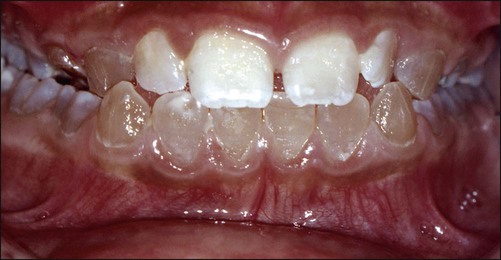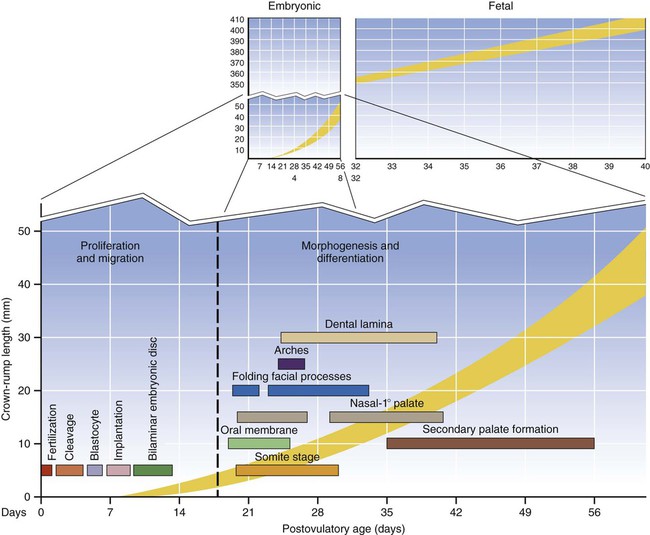General Embryology
Germ Cell Formation and Fertilization
Approximately 10% of all human malformations are caused by an alteration in a single gene. Such alterations are transmitted in several ways, of which two are of special importance. First, if the malformation results from autosomal dominant inheritance, the affected gene generally is inherited from only one parent. The trait usually appears in every generation and can be transmitted by the affected parent to statistically half of the children. Examples of autosomal dominant conditions include achondroplasia, cleidocranial dysostosis, osteogenesis imperfecta, and dentinogenesis imperfecta; the latter two conditions result in abnormal formation of the dental hard tissues. Dentinogenesis imperfecta (Figure 2-1) arises from a mutation in the dentin sialophosphoprotein gene. Second, when the malformation is due to autosomal recessive inheritance, the abnormal gene can express itself only when it is received from both parents. Examples include chondroectodermal dysplasia, some cases of microcephaly, and cystic fibrosis.
Induction, Competence, and Differentiation
All homeobox genes contain a similar region of 180 nucleotide base pairs (the homeobox) and function by producing proteins (transcription factors) that bind to the DNA of other downstream genes, thereby regulating their expression. By knocking out such genes or by switching them on, it has been shown that they play a fundamental role in patterning. Furthermore, combinations of differing homeobox genes provide codes or sets of assembly rules to regulate development; one such code is involved in dental development (see
Stay updated, free dental videos. Join our Telegram channel

VIDEdental - Online dental courses




